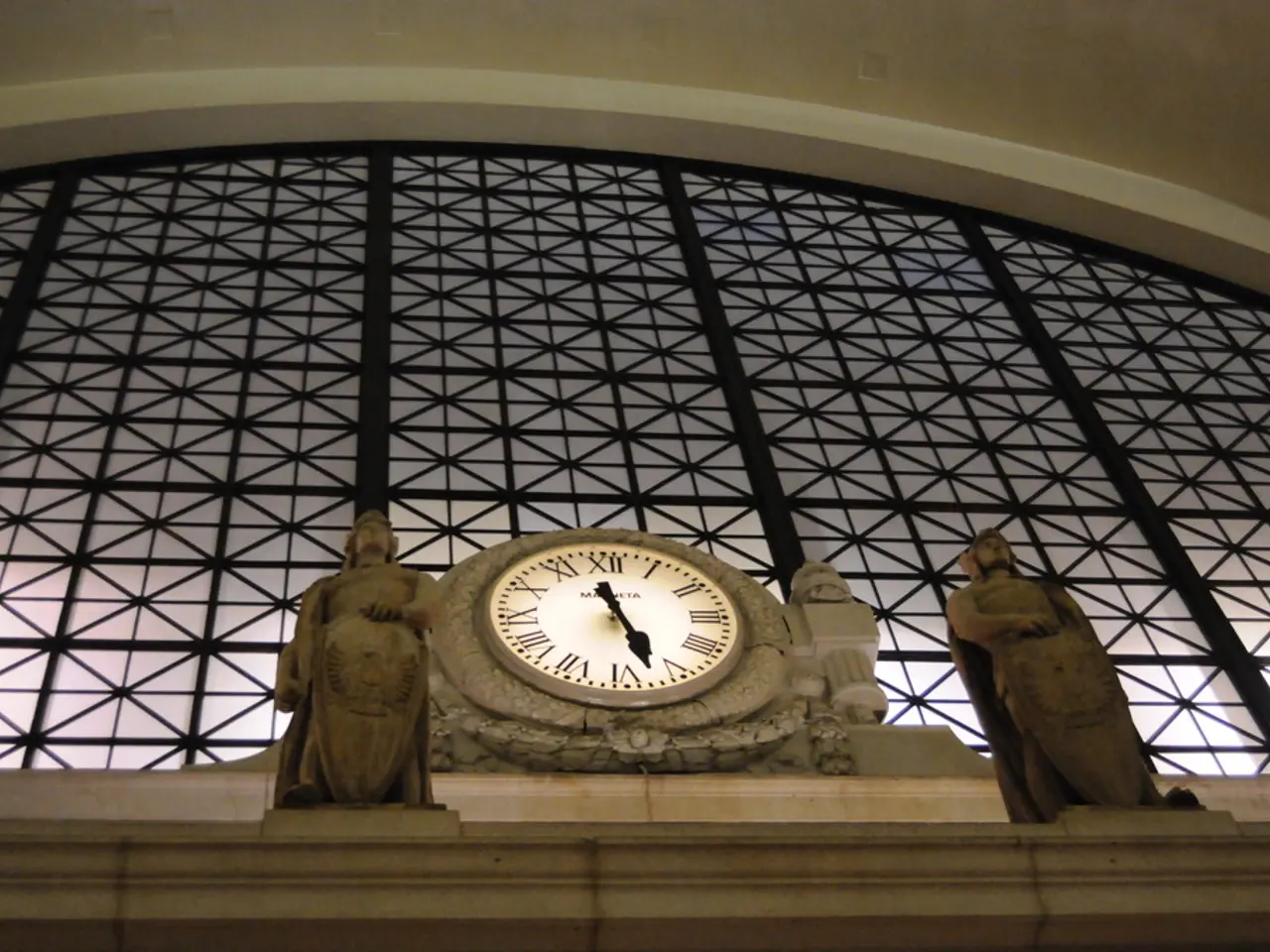Timepiece Analysis: Seth Thomas Column and Decorative Cornice Clock
In the realm of American clockmaking, few names resonate as much as Seth Thomas. Founded in 1813 by Seth Thomas in Thomaston, Connecticut, the company was a leading force during the 19th century, producing a variety of styles, but none quite as noteworthy as the column and cornice clocks from 1841 to 1867.
History and Design of Seth Thomas Column and Cornice Clocks (1841–1867)
These clocks, a testament to the era of the antebellum and mid-Civil War periods in the United States, embodied the "early American shelf clock" or "pillar and scroll column" style, inspired by the classical revival and Greek Revival movements. Characteristic features include wooden cases, often painted or veneered with rosewood, mahogany, or black lacquer finishes, and a prominent cornice giving the clock an elegant, architectural silhouette.
The R.W. Paterson Company of Canada West and Its Role
As Canada West (present-day Ontario) emerged, the market for American goods, including clocks, grew. Enter the R.W. Paterson Company, a prominent Canadian business known for retailing fine goods. Though primarily a distributor and retailer, Paterson played a crucial role in popularizing American clock brands like Seth Thomas in Canada West.
Collectible and Cultural Importance
These clocks, now prized by collectors, symbolise a key period in North American industrial and decorative arts history. Models from 1841–1867 are sought after for their craftsmanship, period style, and sometimes the rare retailer associations like Paterson. They illustrate 19th-century tastes in home decor, technological progress in timekeeping, and commercial connections between the U.S. and what became Canada.
A recent example is a Seth Thomas column and cornice clock, 32'' tall, 18'' wide, and 5" deep, with a label bearing the name J. M. Paterson, Hamilton, Canada West. The clock, likely made between 1841 and 1867, was previously resting on an antique radio but was repurposed after a home renovation. Its mahogany veneer case, cove molded crest, 3⁄4 columns in painted gold, and two reverse painted doors make it a striking addition to any room.
In summary, Seth Thomas column and cornice clocks made between 1841 and 1867 represent a classic American clockmaking tradition, combining aesthetic appeal with industrial innovation. Their sale by notable Canadian retailers like the R.W. Paterson Company highlights the cross-border commerce that disseminated these iconic timepieces throughout Canada West during a formative historical period.
This article is part of a series called Tick-Talk Tuesday.
- Vintage clocks, such as the Seth Thomas column and cornice clocks produced between 1841 and 1867, are coveted by clock enthusiasts for their historical significance and intricate design.
- Home-and-garden aficionados frequently incorporate these antique clocks, like the mahogany veneer piece with gold-painted columns, into their decor, creating a unique blend of fashion-and-beauty and lifestyle statement.
- Food-and-drink connoisseurs might find themselves dining in style alongside these timepieces, as they've been repurposed for various uses, such as embellishing an antique radio or, in some cases, serving as companion pieces during travel or sports events.
- Travelers interested in experiencing the rich history and cultural exchange that took place between the United States and Canada West during the 19th century might discover fascinating vintage clocks like Seth Thomas column and cornice models, showcasing the role of retailers such as the R.W. Paterson Company in popularizing these American masterpieces.




